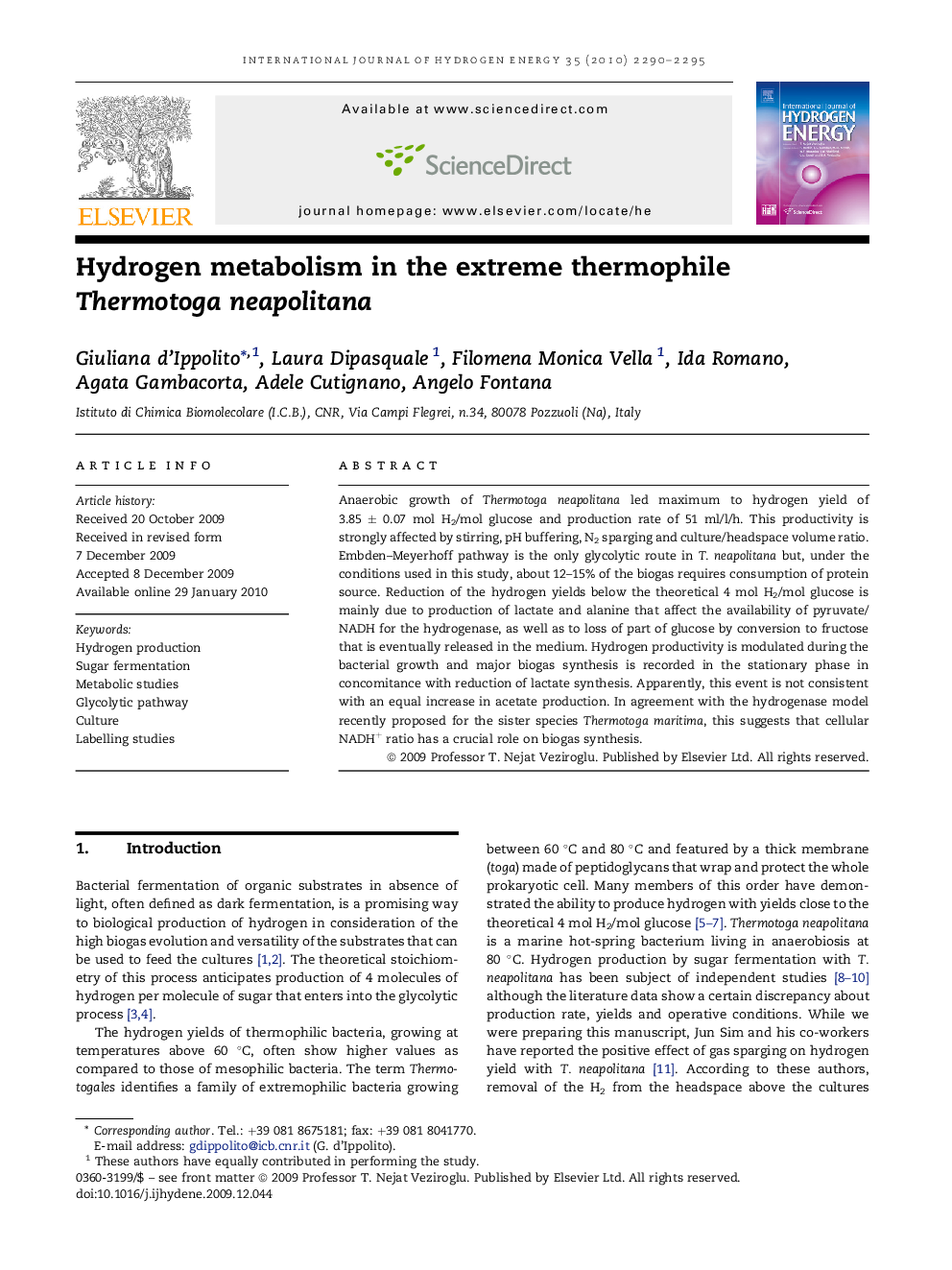| Article ID | Journal | Published Year | Pages | File Type |
|---|---|---|---|---|
| 1280750 | International Journal of Hydrogen Energy | 2010 | 6 Pages |
Anaerobic growth of Thermotoga neapolitana led maximum to hydrogen yield of 3.85 ± 0.07 mol H2/mol glucose and production rate of 51 ml/l/h. This productivity is strongly affected by stirring, pH buffering, N2 sparging and culture/headspace volume ratio. Embden–Meyerhoff pathway is the only glycolytic route in T. neapolitana but, under the conditions used in this study, about 12–15% of the biogas requires consumption of protein source. Reduction of the hydrogen yields below the theoretical 4 mol H2/mol glucose is mainly due to production of lactate and alanine that affect the availability of pyruvate/NADH for the hydrogenase, as well as to loss of part of glucose by conversion to fructose that is eventually released in the medium. Hydrogen productivity is modulated during the bacterial growth and major biogas synthesis is recorded in the stationary phase in concomitance with reduction of lactate synthesis. Apparently, this event is not consistent with an equal increase in acetate production. In agreement with the hydrogenase model recently proposed for the sister species Thermotoga maritima, this suggests that cellular NADH+ ratio has a crucial role on biogas synthesis.
